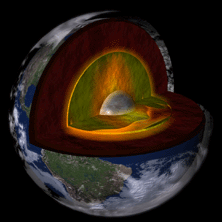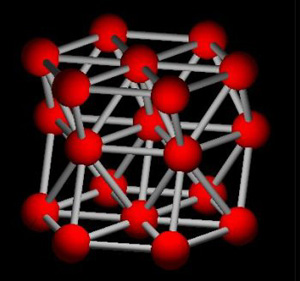The iron at the centre of the Earth is not packed the way scientists had always assumed, according to Swedish researchers. Their findings could have important implications for understanding and predicting the scale of earthquakes and volcanic eruptions.
The Earth’s core is mostly iron. Researchers previously thought that under the enormous pressures at the centre of the Earth, the iron atoms would shift from the loose atomic arrangement known as body centred cubic or bcc, where each atom is at the corner of a cube to a much denser arrangement known as hexagonal close packed, or hcp in which atoms pack like apples stacked neatly in hexagon layers in a box. It seems obvious that greater pressures would lead to the atoms packing more densely. However, the Earth’s inner core means not only high pressure but also very high temperatures, Anatoly Belonoshko of the Royal Institute of Technology in Stockholm (KTH) told Spotlight.

Costa Rica’s Arenal volcano
Belonoshko and colleague Börje Johansson have now shown that iron, under the extreme conditions at the Earth’s core, takes on rather unexpected properties. The findings could have implications for understanding the movements of the Earth.
The KTH materials scientists have used powerful computer simulations based on density functional theory to model the behaviour of iron at the extreme conditions at the Earth’s core. They have found that rather than the hcp arrangement becoming more stable as the temperature and pressure rise, the iron atoms unexpectedly revert to the bcc structure. This is due to the higher entropy of the bcc phase, Belonoshko told us. This plays a decisive role at the high temperature of the Earth’s deep interior. Again we see that entropy rules the world!

Right to the core of the problem (Credit: Jacob Seth-Fransson, Information Centre, KTH)

The hcp form of iron (Credit: Belonoshko/KTH)

The bcc form of iron (Credit: Belonoshko/KTH)
Further reading
Suggested searches
Earth’s core
density functional theory